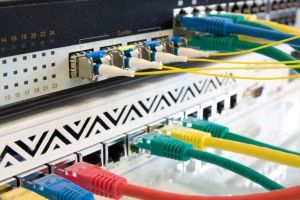Reliable Industrial SSD Storage – It’s about the NAND and Controller Technology
 There’s a simple fact for Solid State Drives (SSD). The most reliable SSD use the most reliable NAND Flash and Controller technology. These are not the least expensive or necessarily the fastest devices - and they’re known as Industrial Grade SSD.Today the most reliable NAND flash is the oldest Single-Level-Cell (SLC) NAND with the widest trace width. Since every new generation of NAND flash shrinks the size of the trace width, reliability and endurance suffer. See SLC vs MLC NAND White Paper for more details.
There’s a simple fact for Solid State Drives (SSD). The most reliable SSD use the most reliable NAND Flash and Controller technology. These are not the least expensive or necessarily the fastest devices - and they’re known as Industrial Grade SSD.Today the most reliable NAND flash is the oldest Single-Level-Cell (SLC) NAND with the widest trace width. Since every new generation of NAND flash shrinks the size of the trace width, reliability and endurance suffer. See SLC vs MLC NAND White Paper for more details.
For SSD controllers, compromises are made during design which affect the performance, reliability and price. The highest performance controllers make use of high speed internal buffers of volatile memory. This is great for performance but increases data which is susceptible to loss during unexpected power interruption.
Products created for the Consumer, Enterprise or Client market are generally focused on performance and cost. This is great if the application is just focused on these items.
A wise man once told me, “The lowest cost memory will drive technological innovation.” What he meant by this was a highly unreliable memory device can be made acceptable for some applications through use of very innovative controller technology, firmware and algorithms.
A lower retail price point of a flash card can enable an entirely new category of consumer products. We’ve seen this in the past with digital cameras, digital audio players, USB flash drives and Client SSD. The principal way to lower this price point is to use the lowest cost memory.
So what makes a memory device low cost? More bits in the same physical silicon area. For example SLC (Single-Level-Cell) NAND stores just one bit of data; Multi-Level-Cell (MLC) NAND stores two bits per cell and Tri-Level-Cell (TLC) NAND stores three bit per cell.
Are there downsides to storing more bits per cell? Yes, with all flash memory, there are a limited number of endurance cycles. More bits/cell equals less endurance cycles/cell. Current SLC NAND is 50K-70K cycles; MLC is 3K cycles and TLC is 300 cycles. More bits per cell also lowers the small block transfer speed of the memory.
What does this mean to an OEM deciding which SSD to choose for their application? They should first thoroughly understand their application’s requirements. An OEM system being designed for a 5 - 10 life span shouldn’t use an SSD designed to last 2 - 3 years in their application.
High write cycle and wide temperature applications should also steer clear of SSDs using low write endurance Multi-Level-Cell (MLC) or Tri-Level-Cell (TLC) NAND Memory for the same reasons.
In summary, Industrial Grade SSD use the most reliable SLC NAND flash combined with controllers developed above all for reliability. Cactus Technologies is a leading supplier of Industrial Grade Flash Storage Devices and we’d be happy to review your design. Talk to a Cactus Expert if you would like more details.






